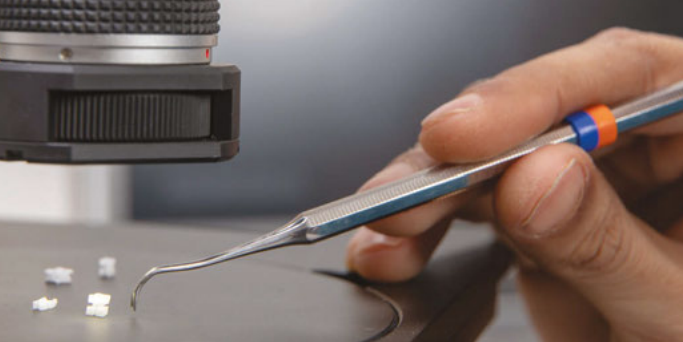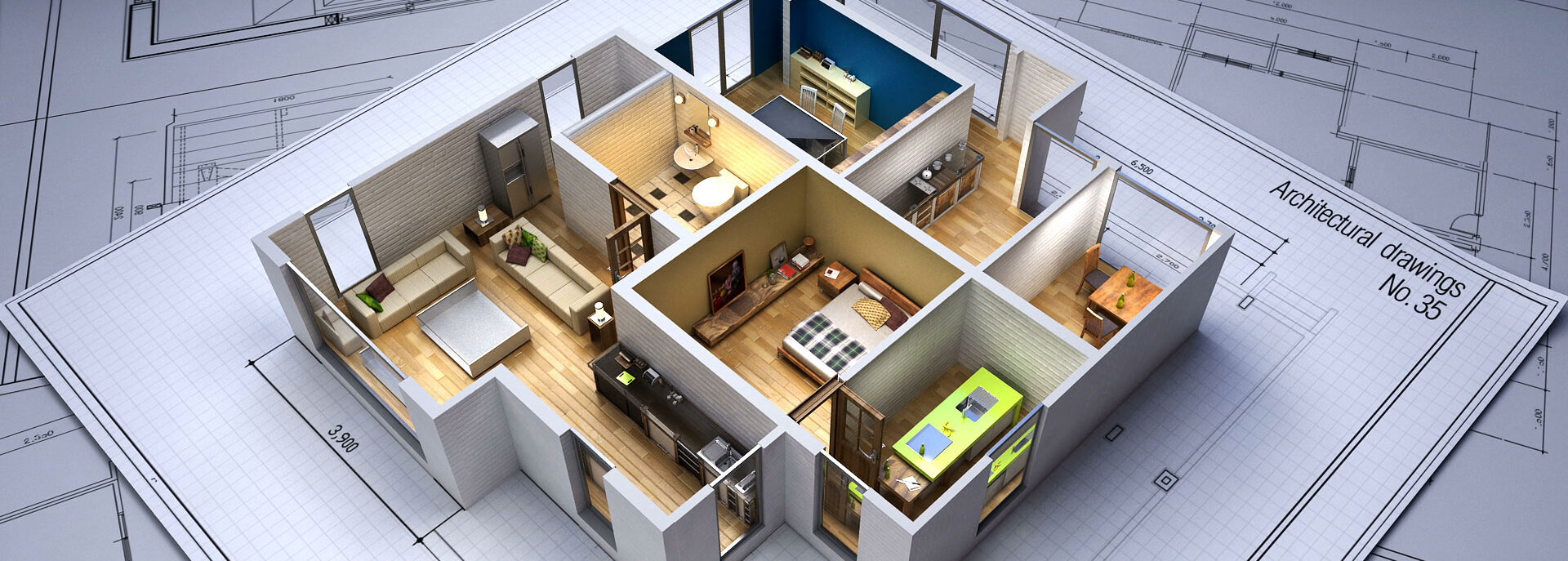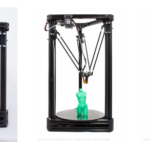

A dental resident walked into a bar full of Harvard graduate students. No, it’s not the beginning of a bad joke, but actually the genesis of venture-backed startup LightForce Orthodontics, which officially launched at this year’s American Association of Orthodontists (AAO) Annual Session. The team is making what it calls the world’s first customized 3D printed bracket system for the digital orthodontics field.
The startup’s founder and CEO, Dr. Alfred Griffin, comes from a long line of dentists, and had just completed a combined dental and PhD program at the Medical University of South Carolina before moving to Boston in 2015 to attend the Harvard School of Dental Medicine for his residency. He wasn’t used to the whiteout conditions of a hard New England winter, and spent a lot of time holed up in his apartment, dreaming up the innovative bracket system.
Dr. Larry Andrews and A-Company first introduced fully programmed brackets in 1970, and not a lot has changed since then.
“Standard orthodontic prescriptions are essentially a compromise from the outset,”explained Dr. Griffin in the special edition AAO issue of this year’s Orthodontic Practice US. “They are an “all patients equal” proposition. But no two patients have exactly the same tooth morphology or exactly the same bite. So why would we think they should all have the same ‘ideal’ finish?
“The concessions with pre-programmed brackets have been imposed by several constraining factors. Two of the primary constraints are inflexible bracket manufacturing technologies and the imprecision of analog treatment planning.”
It costs hundreds of thousands of dollars and takes anywhere from six to twelve months, using injection molding, to create molds for one standard prescription, which is about 20 brackets of different programming and shapes – not a realistic environment for patient-specific customization. So Dr. Griffin turned to 3D printing, which already has many applications in the dental and orthodontics fields, such as creating aligners, molds, implants, dentures, and even braces.
Most braces are “off the rack,” and even though skilled orthodontists can make this work, Dr. Griffin knew that 3D printing, which is a good fit for custom applications, could be used to make patient-specific braces. So he created a patented system for 3D printed orthodontic treatment brackets, using material nearly identical to injection modeled ceramic brackets but that’s been formulated specifically for 3D printing.
“Delivering a patient-specific prescription for each case, the LightForce system is unlike anything you’ve ever used,” claims the website. “Each bracket is custom created and 3D-printed, bringing a new level of flexibility and clinical possibilities. This enhances treatment efficiency and minimizes time-consuming adjustments in all phases of treatment.”
That same snowy winter, Dr. Griffin attended a local happy hour with Harvard graduate students, and after buying a few rounds, explained his idea to the group. Engineer Kelsey Peterson-Fafara immediately recognized the potential, and would soon be employee #1. Not long after LightForce, originally titled Signature Orthodontics, was accepted into the Harvard Innovation Lab accelerator, Dr. Griffin met orthodontist Dr. Lou Shuman, who had been an important member of the executive team for another dental company using 3D printing: Invisalign. He soon asked Dr. Shuman to be the company’s co-founder, and help reach out to the venture capital community.

LightForce Orthodontics was one of 128 applicants chosen to join the MassChallenge Accelerator program in 2016, and became entrepreneurs-in-residence at the MassChallenge facility, later receiving $50,000 in equity-free financing as one of the 15 winners. The next step was locking down venture capital, but Dr. Griffin didn’t want to work with just anyone – he was looking to change how orthodontics works at a fundamental level, not just for a cash grab. The company’s first major funding came from AM Ventures (AMV), which is dedicated to investing in 3D printing.
“We wanted a strategic investor — not just someone with money,” Dr. Shuman said. “We wanted expertise in our fundamental technology. AMV was an ideal partner for LightForce.”
Speaking of expertise, AMV introduced Dr. Griffin and Dr. Shuman to EOS founder and industry pioneer Hans Langer, who believes that LightForce has achieved the two most important components in the future of 3D printing: creating high value customization, and having a market that’s large enough to support it.
- Inspection
- Validation
LightForce continued to grow, staying on as Alumni in Residence at MassChallenge through 2017, hiring expert dental software developers, finalizing the bracket design, and receiving FDA clearance for the system. The startup closed its Series A funding round last summer, enjoyed a successful debut at the 2019 AAO Annual Session, and has multiple patients in treatment who wanted to be the first to sport customized, 3D printed braces.
The brackets can be perfectly contoured to any tooth morphology. The initial system was made to compete with metal brackets, and LightForce is now working on higher-aesthetic options and looking at different materials, as well as perfecting its service and supply chain logistics. It’s a simple three-step digital workflow: scan, create the 3D model, and print. The online interface is intuitive, with cloud-based treatment planning software that allows users to make adjustments directly on the model, before the custom 3D printed appliance is shipped in just 7-10 business days after approval.
In order to keep up with a changing industry, LightForce’s treatment planning system will keep evolving as necessary. Aligners are becoming more capable, but many orthodontists still use braces for their patients, which is why LightForce is looking at the larger marketplace.
Dr. Griffin explained, “We don’t want to bring the idea to market and say `here’s how to use it.` We want to bring this to the orthodontist and ask them, ‘What can you do with it?’”
As direct-to-consumer companies gain popularity, Dr. Griffin wants the startup to acknowledge the expertise of the orthodontic community, and help the field, not just take it over.
Discuss this and other 3D printing topics at 3DPrintBoard.com or share your thoughts below.
If you're looking to get an architectural rendering quote in the USA, our service provides a simple and efficient process to obtain the best pricing tailored to your project. Through our platform, you can easily submit your project details and receive a competitive quote from our team of experts. We offer high-quality 3D renderings for both interior and exterior designs, helping you bring your architectural visions to life with stunning precision. With our support, you can be confident in receiving professional services at affordable prices, without the hassle of dealing with multiple vendors.
Getting an accurate architectural rendering quote has never been easier. Through our portal, you’ll have direct access to a streamlined process where we guide you step by step, ensuring all your needs are met. Our 3D rendering experts work closely with you to ensure the final product matches your expectations, whether it’s for residential, commercial, or mixed-use developments. Trust our platform to provide you with the best possible rates and results, all with a quick turnaround time and exceptional customer support.





